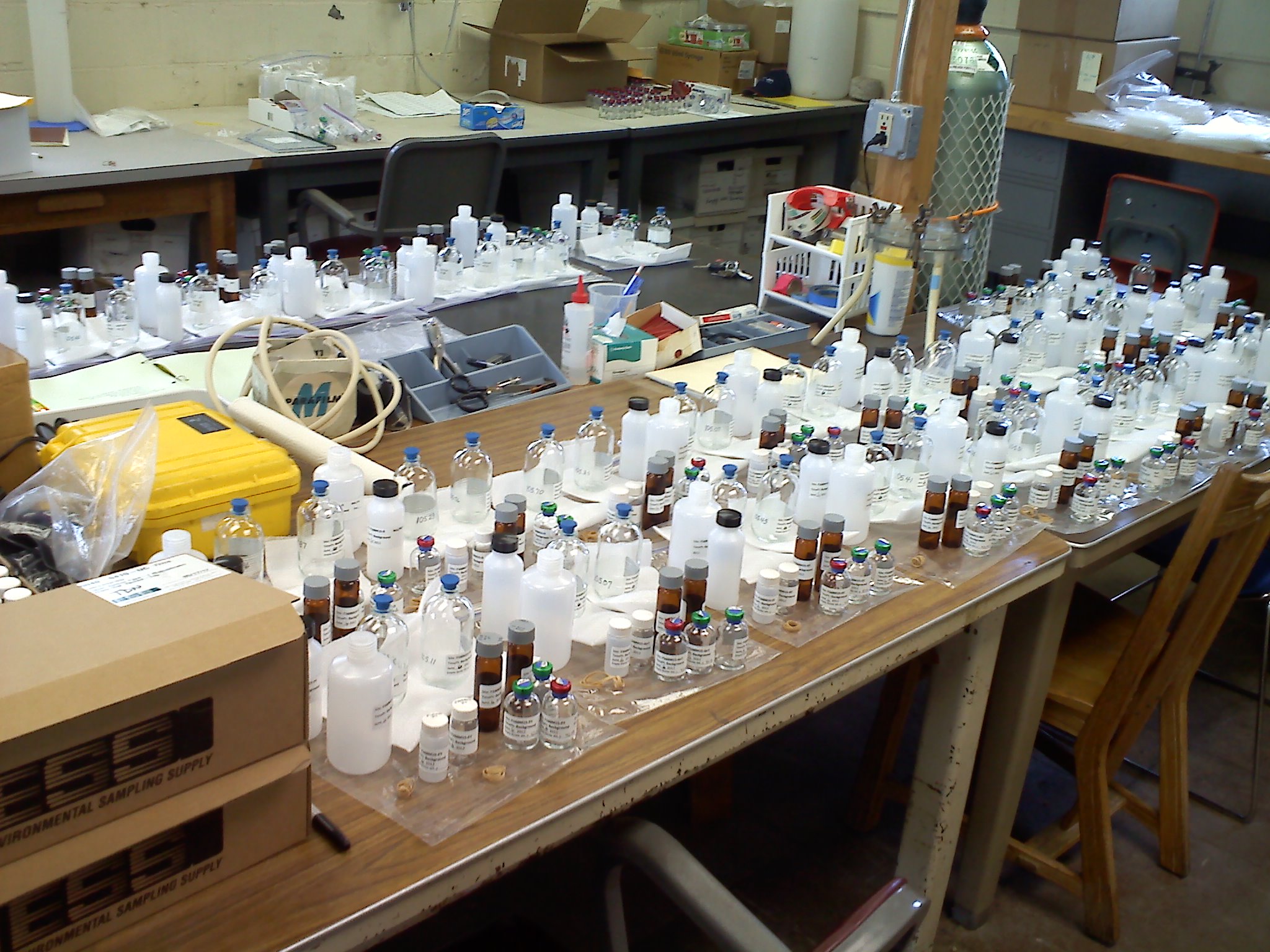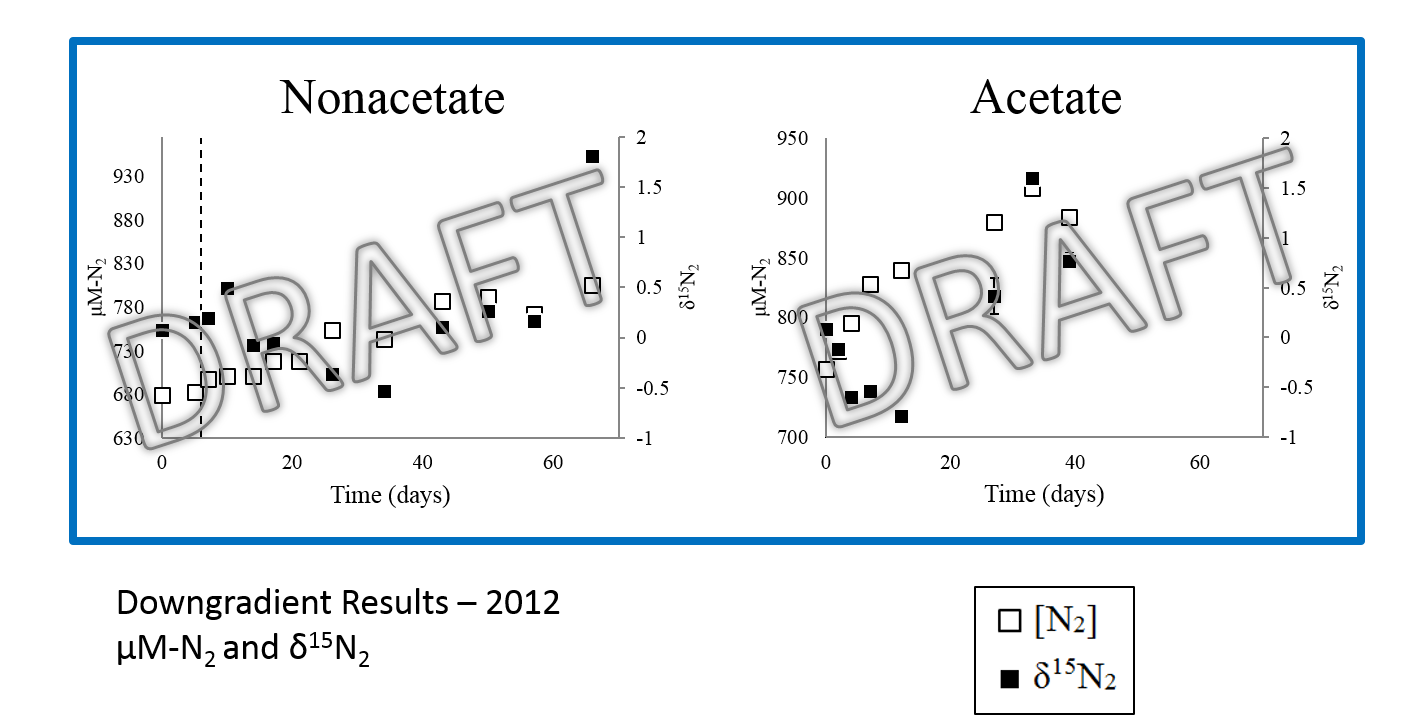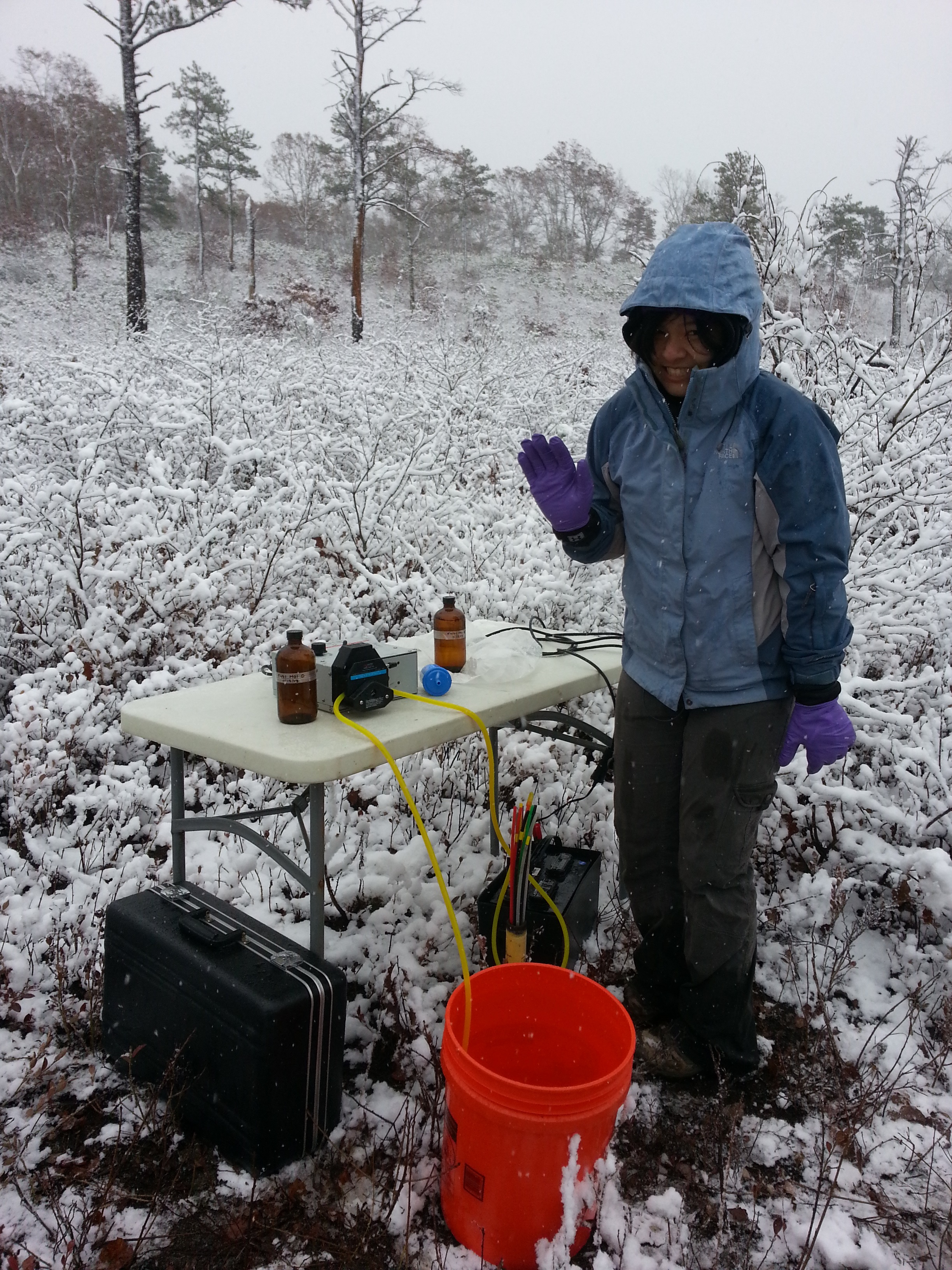Anammox in a shallow coastal aquifer – combining in situ stable isotope and molecular approaches to examine controls on rates and communities – Funded through NSF Grant
Groundwater holds a large reserve of DIN with extended residence times that permit slow removal rates to impact total in-aquifer loads and the magnitude of DIN subsequently discharged to surface waters. Current analysis suggests that 20% of global DIN conversion to N2 (via denitrification) occurs in aquifers. Our preliminary evidence suggests that anammox may exceed denitrification in N-rich aquifers. Global groundwater DIN loss estimates cannot be complete without considering anammox. The proposed work will yield the first reported in situ anammox rates for groundwater and define how microbial nitrogen cycling communities (anammox, denitrification, nitrification) interact in a mutualistic or competitive fashion to regulate nitrogen fate in aquifers. Through collaboration among a hydrologist, isotope geochemist(s), and microbial ecologist(s), the work crosses traditional disciplinary boundaries. The results provide a heretofore missing component for the assessment of anammox importance across ecosystems. The work is specifically made transferable to other systems by supplementing anammox rate information with quantifying the general geochemical and/or microbial controls on anammox. Further, by establishing the isotopic fractionation effects for this reaction we can potentially provide an anammox diagnostic tool for researchers in other disciplines (e.g. soil scientists, oceanographers). The overall goal of this study is to address the following questions: 1) Does anammox occur at sufficient in situ rates to warrant its consideration as an important mechanism of N loss during groundwater transport? 2) Are there indicative chemical or isotopic signatures for anammox in groundwater that can aid in its detection and quantification? 3) What are the subsurface geochemical conditions that promote anammox? 4) To what extent is anammox dependent on, or competes with, other N-cycling reactions (denitrification and nitrification) for substrate(s)?
Study done with support from USGS Cape Cod Toxins Project.
Role of Anaerobic Ammonium Oxidation (Anammox) in Nitrogen Removal from a Freshwater Aquifer




